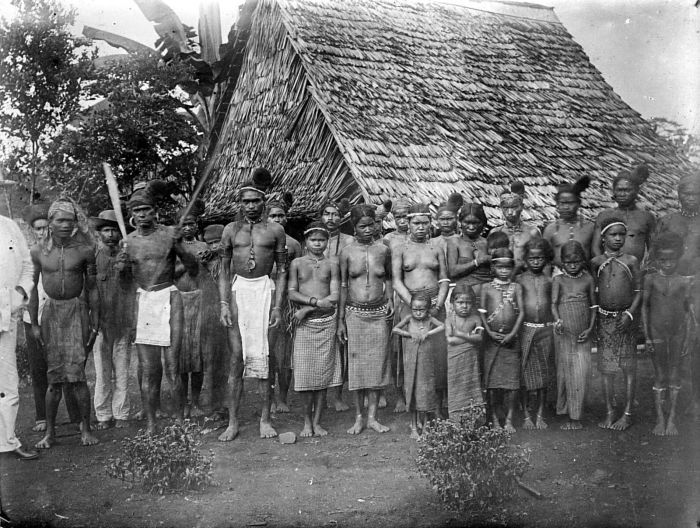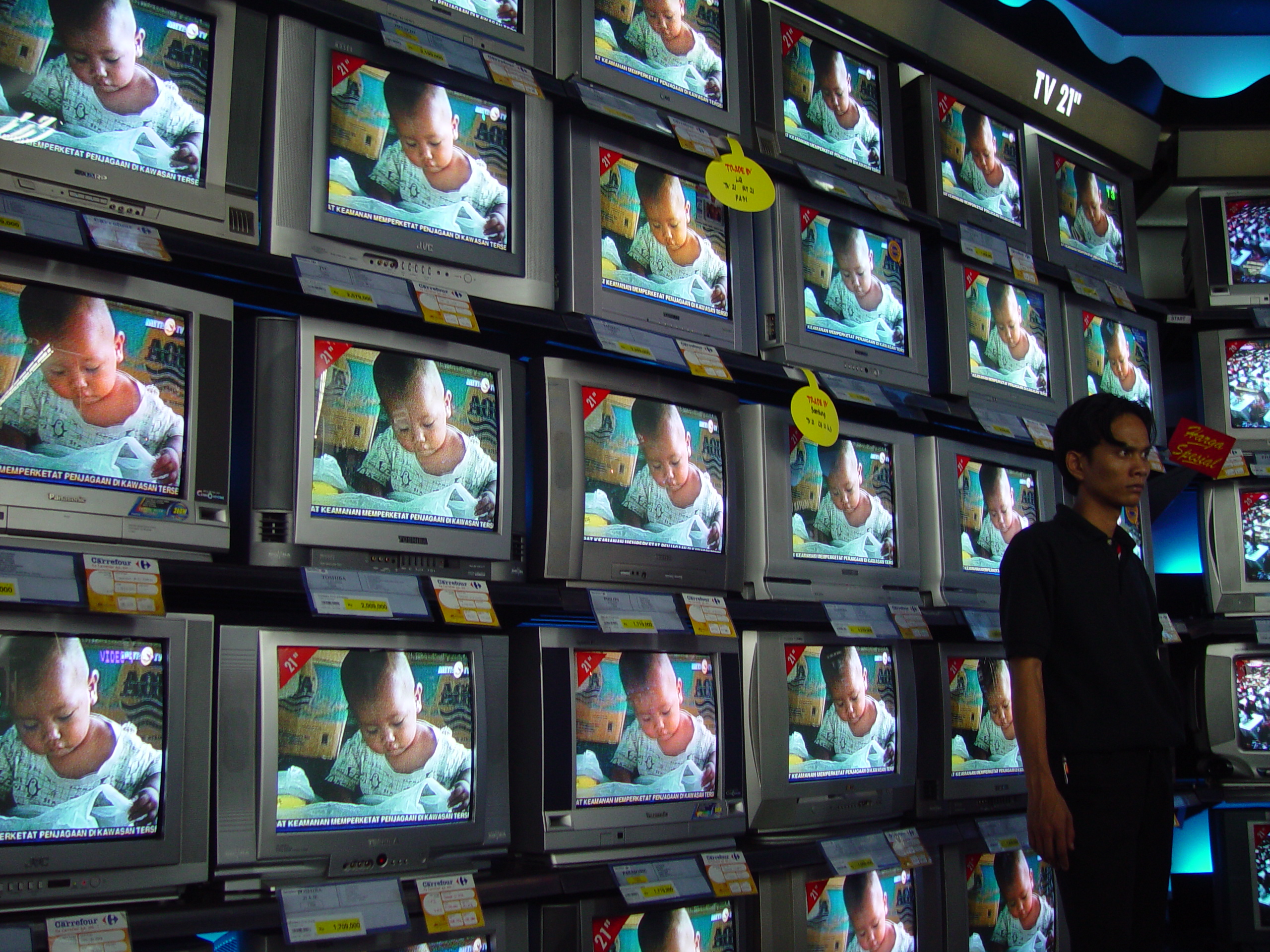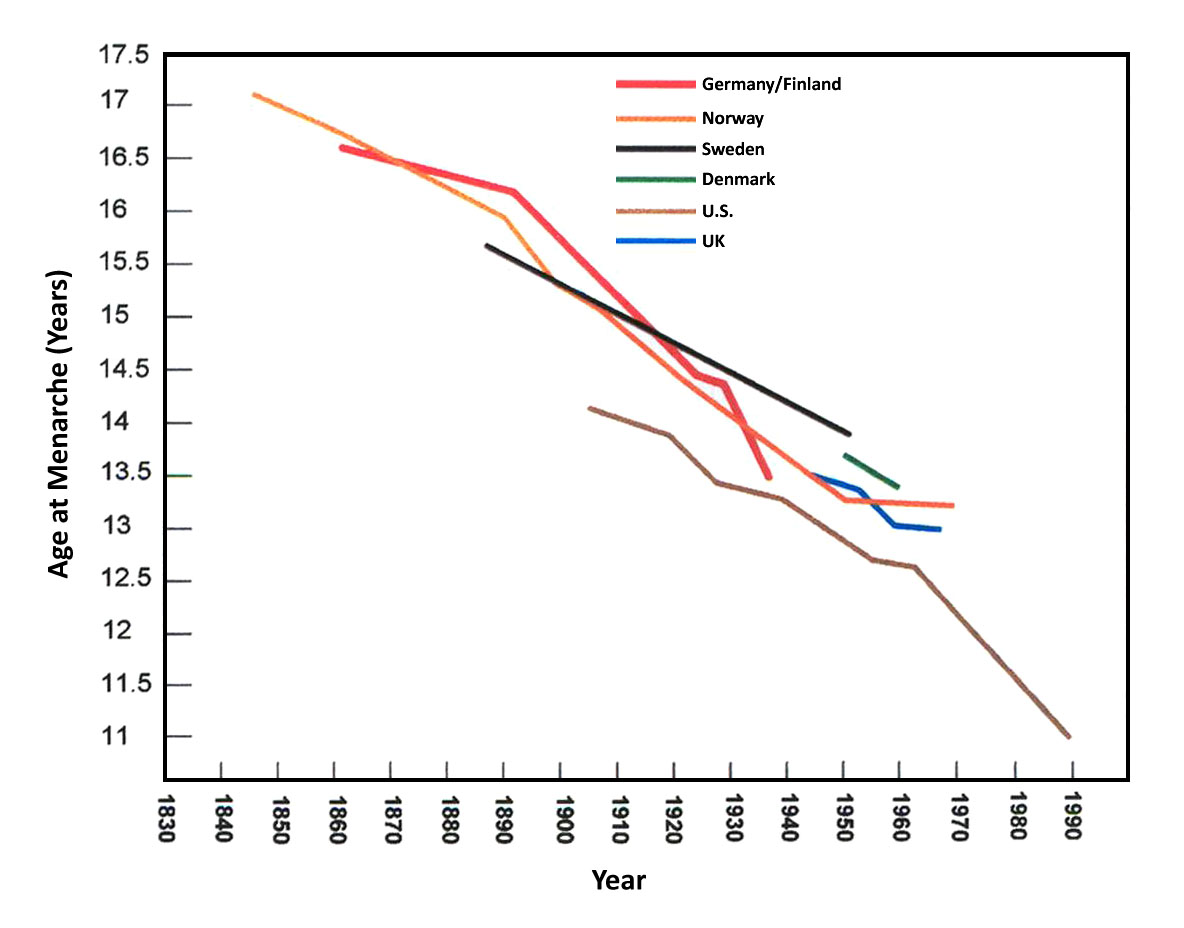|
Alune
The Alune (sometimes Sapalewa or Sapolewa) people are one of the long-established ethnic groups of Seram Island, Indonesia. They number about 21,300 and live in 27 villages of the western-central area of the island. Like the Wemale, they originated in a common group called Patasiwa. The Alune speak a language of Malayo-Polynesian origin. It is also known as Sapalewa or Patasiwa Alfoeren and, despite the small number of speakers, it has a few dialects. The most prestigious dialect is the Rambatu speech variety. The Hainuwele legend is an origin myth from the Alune and Wemale folklore. It was recorded by German ethnologist Adolf Ellegard Jensen in a 1937–8 expedition to the Maluku Islands. Description Like other ancient human groups living in interior Seram, the Alune traditionally lived off forest products. Their diet was based on the sago palm and they also practiced shifting cultivation.Sachse, F. J. P., "Het Eiland Seram en zijne Bewoners". Leiden, 1907 Both men and w ... [...More Info...] [...Related Items...] OR: [Wikipedia] [Google] [Baidu] |
Alune Language
Alune is an Austronesian language of west Seram in the Maluku archipelago of Indonesia Indonesia, officially the Republic of Indonesia, is a country in Southeast Asia and Oceania, between the Indian Ocean, Indian and Pacific Ocean, Pacific oceans. Comprising over List of islands of Indonesia, 17,000 islands, including Sumatra, .... Phonology * can be heard as a trill in word-initial and intervocalic positions, and may also fluctuate to an affricate sound. * can be heard as a velar nasal when preceding velar stops. References Seram Island Central Maluku languages Languages of Indonesia {{au-lang-stub ... [...More Info...] [...Related Items...] OR: [Wikipedia] [Google] [Baidu] |
Wemale People
The Wemale people are an ethnic group of Seram Island, Indonesia. They number over 7,500 and live in 39 villages of the central area of the island. Like the Alune people in the west, the Wemale people originate from a common ancestral group called the Patasiwa. The Wemale language is of Malayo-Polynesian origin and it is divided into a northern and a southern variety, having dialects known as Horale, Kasieh, Uwenpantai, Honitetu and Kawe. Northern Wemale is spoken by about 5,000 people and the Southern Wemale is spoken by about 3,700 people. The Hainuwele legend is an origin myth from the Wemale and Alune folklore. It was recorded by German ethnologist Adolf Ellegard Jensen in a 1937–1938 expedition to the Maluku Islands. Description Traditionally the Wemale lived off forest products. Much of their diet was based on the sago palm. They also practiced shifting cultivation. Males used to engage in warrior activities against neighboring groups. Females used to spend m ... [...More Info...] [...Related Items...] OR: [Wikipedia] [Google] [Baidu] |
Alfur People
Alfur, Alfurs, Alfuros, Alfures, Aliforoes, Alifuru or Horaforas (in Dutch language, Dutch, ''Alfoeren'') is a broad term historically used during the Portuguese Empire, Portuguese seaborne empire. The term was primarily associated with communities from the Arafura Sea area.The Alifuru people are indigenous Melanesian inhabitants of the Maluku Islands in eastern Indonesia.Traditionally associated with regions such as Seram, Buru, and the Kei Islands, the Alifuru are considered part of the broader Melanesian cultural and genetic continuum. While many speak Austronesian languages and have integrated aspects of Malay-Indonesian culture Etymology Several origins for the term Alfur have been proposed, including from Spanish language, Spanish, Portuguese language, Portuguese, and even Arabic. The most likely hypothesis however is that it originated from Tidore language, Tidorese ''halefuru'', a compound composed of the stems ''hale'' "land" and ''furu'' "wild, savage". From Tidore it w ... [...More Info...] [...Related Items...] OR: [Wikipedia] [Google] [Baidu] |
Hainuwele
Hainuwele, "The Coconut Girl", is a figure from the Wemale and Alune folklore of the island of Seram in the Maluku Islands, Indonesia. Her story is an origin myth. The myth of Hainuwele was recorded by German ethnologist Adolf E. Jensen following the Frobenius Institute's 1937–38 expedition to the Maluku Islands. The study of this myth during his research on religious sacrifice led Jensen to the introduction of the concept of Dema Deity in ethnology. Joseph Campbell first narrated the Hainuwele legend to an English-speaking audience in his work '' The Masks of God''. Myth While hunting one day a man named Ameta found a coconut, something never before seen on Seram, that had been caught in the tusk of a wild boar. Ameta, who was part of one of the original nine families of the West Ceram people who had emerged from bananas, took the coconut home. That night, a figure appeared in a dream and instructed him to plant the coconut. Ameta did so, and in just a few days ... [...More Info...] [...Related Items...] OR: [Wikipedia] [Google] [Baidu] |
Seram Island
Seram (formerly spelled Ceram; also Seran or Serang) is the largest and main island of Maluku province of Indonesia, despite Ambon Island's historical importance. It is located just north of the smaller Ambon Island and a few other adjacent islands, such as Saparua, Haruku, Nusa Laut and the Banda Islands. Geography and geology Seram is traversed by a central mountain range, the highest point of which, Mount Binaiya, is covered with dense rain forests. Its remarkably complex geology is because of its location at the meeting of several tectonic microplates, which have been described as "one of the most tectonically complex areas on Earth". Seram falls on its microplate, which has been twisted around by 80° in the last 8 million years by the relatively faster movement of the Papua microplate. Meanwhile, along with the northward push of the Australian Plate, this has resulted in the uplift that gives north-central Seram peaks of over 3000 m. On the island, there are import ... [...More Info...] [...Related Items...] OR: [Wikipedia] [Google] [Baidu] |
Maluku Islands
The Maluku Islands ( ; , ) or the Moluccas ( ; ) are an archipelago in the eastern part of Indonesia. Tectonics, Tectonically they are located on the Halmahera Plate within the Molucca Sea Collision Zone. Geographically they are located in West Melanesia. Lying within Wallacea (mostly east of the biogeography, biogeographical Max Carl Wilhelm Weber, Weber Line), the Moluccas have been considered a geographical and cultural intersection of Asia and Oceania. The islands were known as the Spice Islands because of the nutmeg, Nutmeg#Mace, mace, and cloves that were exclusively found there, the presence of which sparked European colonial interests in the 16th century. The Maluku Islands formed a single Provinces of Indonesia, province from Indonesian independence until 1999, when they were split into two provinces. A new province, North Maluku, incorporates the area between Morotai and Sula Islands Regency, Sula, with the arc of islands from Buru and Seram Island, Seram to Wetar rem ... [...More Info...] [...Related Items...] OR: [Wikipedia] [Google] [Baidu] |
Consumerism
Consumerism is a socio-cultural and economic phenomenon that is typical of industrialized societies. It is characterized by the continuous acquisition of goods and services in ever-increasing quantities. In contemporary consumer society, the purchase and the consumption of products have evolved beyond the mere satisfaction of basic human needs, Stearns, Peter (2006). ''Consumerism in World History''. 2nd ed. Routledge. p. vii–viii. transforming into an activity that is not only economic but also cultural, social, and even identity-forming. It emerged in Western Europe and the United States during the Industrial Revolution and became widespread around the 20th century. In economics, consumerism refers to policies that emphasize consumption. It is the consideration that the free choice of consumers should strongly inform the choice by manufacturers of what is produced and how, and therefore influence the economic organization of a society. Consumerism has been criticized b ... [...More Info...] [...Related Items...] OR: [Wikipedia] [Google] [Baidu] |
Menarche
Menarche ( ; ) is the first menstrual cycle, or first menstruation, menstrual bleeding, in female humans. From both social and medical perspectives, it is often considered the central event of female puberty, as it signals the possibility of fertility. Girls experience menarche at different ages, but the most common age is 12. Having menarche occur between the ages of 9–14 in the West is considered normal.US National Health Statistics Report September 2020 The timing of menarche is influenced by female biology, as well as Genetics, genetic, environmental factors, and nutritional factors. The mean age of menarche has declined over the last century, but the magnitude of the decline and the factors responsible remain subjects of contention. The worldwide average age of menarche is very difficult to estimate ... [...More Info...] [...Related Items...] OR: [Wikipedia] [Google] [Baidu] |
Tapa Cloth
Tapa cloth (or simply ''tapa'') is a barkcloth made in the islands of the Pacific Ocean, primarily in Tonga, Samoa and Fiji, but as far afield as Niue, Cook Islands, Futuna, Solomon Islands, Java, New Zealand, Vanuatu, Papua New Guinea and Hawaii (where it is called '' kapa''). In French Polynesia it has nearly disappeared, except for some villages in the Marquesas. In Melville's "Typee," the ship "Dolly" enters the harbor of Nukuheva where it is met by "swimming nymphs ... their adornments were completed by passing a few loose folds of white tappa, in a modest cincture, around the waist." (Typee, 1968: Evanston and Chicago, Northwestern University Press and the Newberry Library, pp. 14-15.) General The word tapa is from Tahiti and the Cook Islands, where Captain Cook was the first European to collect it and introduce it to the rest of the world. The cloth is also known by a number of local names, although the term ''tapa'' is international and understood throughout the isl ... [...More Info...] [...Related Items...] OR: [Wikipedia] [Google] [Baidu] |
Polynesian Culture
Polynesian culture is the culture of the indigenous peoples of Polynesia who share common traits in language, customs and society. The development of Polynesian culture is typically divided into four different historical eras: * Exploration and settlement (c. 1800 BC – c. AD 700) * Development in isolation (c. 700–1595) * European encounter and colonization until World War II (1595–1946) * Post-World War II period History Origins, exploration and settlement (c. 1800 BC – c. 700 AD) Maternal mitochondrial DNA analysis suggests that Polynesians, including Samoans, Tongans, Niueans, Cook Islanders, Tahitians, Hawaiians, Marquesans and Māori, are genetically linked to indigenous peoples of parts of Maritime Southeast Asia including those of Taiwanese aborigines. This DNA evidence is supported by linguistic and archeological evidence. Recent studies into paternal Y chromosome analysis shows that Polynesians are also genetically linked to peoples of Melanesia. Between ... [...More Info...] [...Related Items...] OR: [Wikipedia] [Google] [Baidu] |






